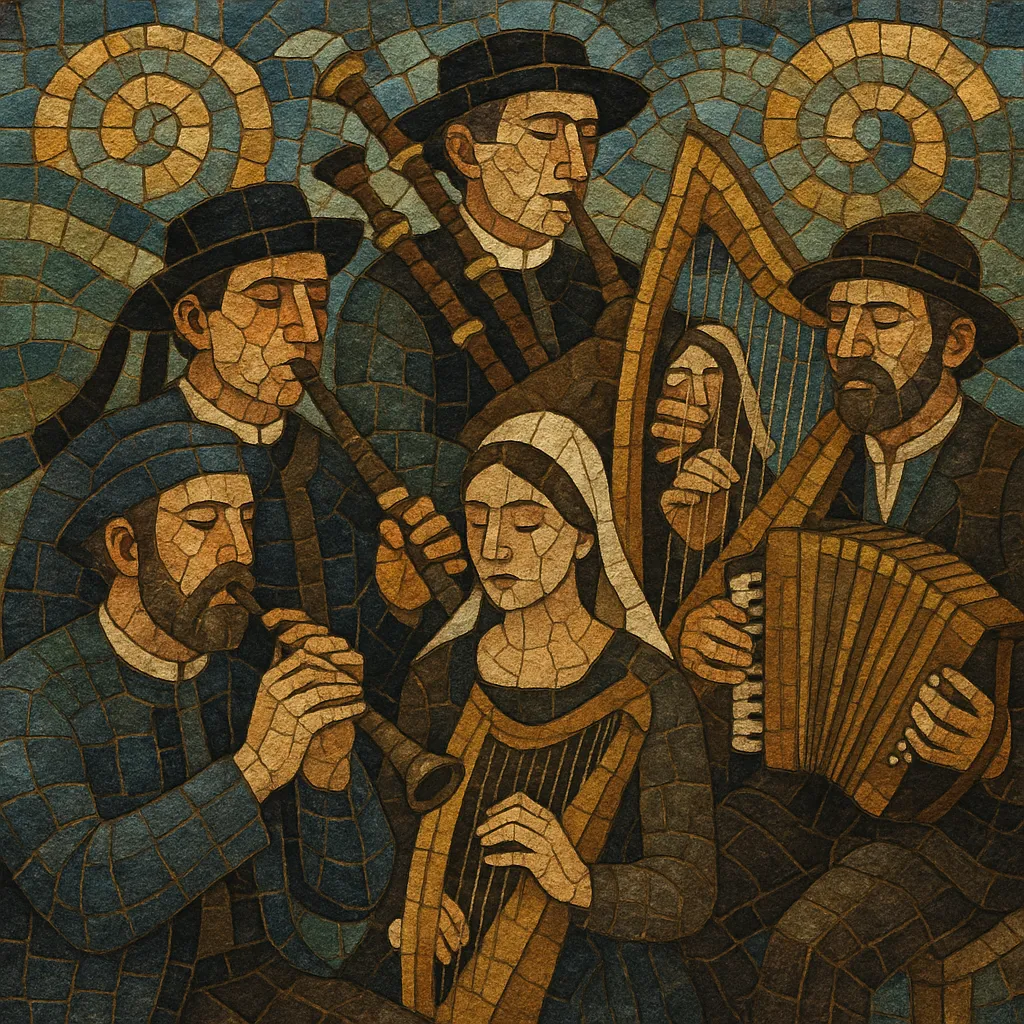Breton folk music is the traditional music of Brittany (Breizh) in north‑western France. It is rooted in Celtic culture and sung primarily in the Breton language, with additional traditions in Gallo. The style encompasses vigorous dance repertoires performed at fest‑noz (night festivals) and deeply emotive narrative songs (gwerzioù).
Signature elements include call‑and‑response singing such as kan ha diskan for dance, modal melodies (often Dorian, Aeolian, or Mixolydian), and sustained drones. Core instruments are the bombarde (a double‑reed shawm) and the biniou (Breton bagpipe), alongside veuze, diatonic accordion, fiddle, Celtic harp, and hurdy‑gurdy. The music’s dance‑driven forms (gavotte, an dro, hanter‑dro, plinn, ridée, etc.) use distinct step cycles and phrasing that shape melodic and rhythmic contour. Modern scenes also feature bagadoù (pipe‑and‑drum bands) and fusions with folk‑rock and contemporary Celtic styles.
Fest‑noz culture—central to the living practice of Breton music—was inscribed by UNESCO on the Representative List of the Intangible Cultural Heritage of Humanity in 2012.
Breton folk music descends from older Celtic oral traditions that predate written sources, but the 19th century saw its first systematic collection and codification. Folklorists and writers such as Théodore Hersart de La Villemarqué (Barzaz Breiz, 1839) and Anatole Le Braz documented gwerzioù (laments) and sonioù (lyric songs), preserving both narratives and melodies. This era anchored the repertoire in print while everyday performance continued in rural social settings, especially for communal dances.
Industrialization and urban migration threatened local music practices, but community gatherings, parish fêtes, and informal venues kept the tradition alive. After World War II, structured ensembles called bagadoù (plural of bagad) emerged, inspired in part by Scottish pipe bands yet focused on Breton instruments (bombardes, biniou braz, percussion). Organizations like Bodadeg ar Sonerion (founded 1943) helped formalize training, competitions, and repertoire.
The 1960s–70s folk revival sparked a dynamic reawakening. Fest‑noz events expanded, young musicians embraced kan ha diskan, and artists such as Alan Stivell, Tri Yann, Dan Ar Braz, and Gilles Servat brought Breton music to international audiences. This period codified dance suites and encouraged instrument building, publishing, and pedagogy. Recordings and festivals created a feedback loop that sustained both tradition and innovation.
From the 1990s onward, artists blended Breton idioms with rock, pop, jazz, and electronic textures, while bagadoù gained global renown through competitions and high‑profile collaborations. Singers like Denez (Denez Prigent) and Yann‑Fañch Kemener revitalized traditional song, and groups such as Ar Re Yaouank and Skolvan popularized contemporary fest‑noz aesthetics. In 2012, France’s fest‑noz was inscribed by UNESCO, affirming the social, communal core of the music. Today, the scene thrives with community dance, education, and cross‑Celtic exchange.


